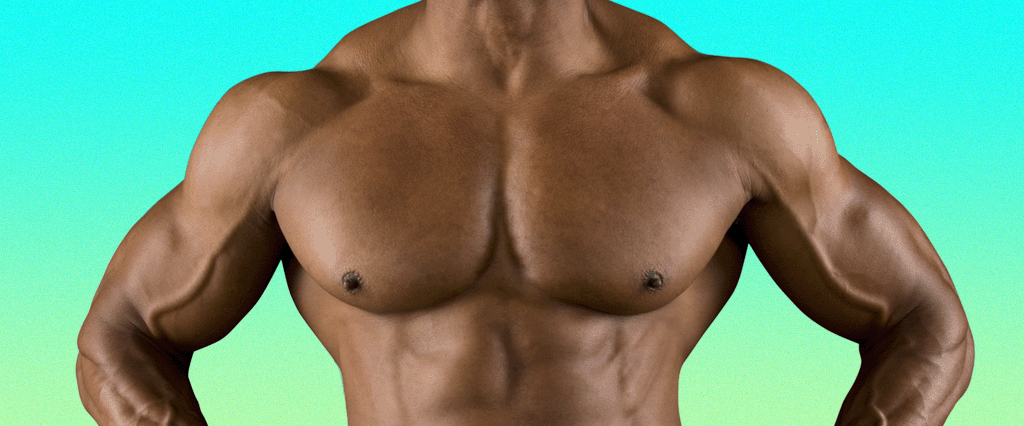In matters of the chest, it can seem as if the bench press is the answer to everything. A measure of strength? Check. The means to shirtless beach days? Check, check. Keeping things tight, at a bare minimum? Check, check, check.
But what if I told you that it’s hardly the only way to accomplish those things. In fact —
Wait, wait, wait — I’m gonna stop you there. What are you talking about? I’m positive that the bench press is the only reliable way to keep my chest in shape.
First of all, your chest consists of three separate collections of muscle fibers that run in three distinct patterns. What this ultimately means is that the most thorough way to train your chest is going to involve at least three different forms of movement, with one movement targeting each pattern.
Among the easiest exercises to begin with for chest development is a push-up. In general, the push-up challenges you to utilize an average of 70 percent of your body weight as resistance as you press it up from the ground. No, the push-up doesn’t offer the peak muscle-building capabilities of the bench press, but it is sufficient for most people to craft respectable, well-defined chest muscles, primarily through the central portions of their pecs.
Next, if you can manage to do them, you should try body-weight dips. If you maintain a 45-degree angle with your body, you will place incredible tension on primarily the middle and lower portions of the chest. This will enable you to pull out your figurative hammer and chisel and carve out layers of muscle along the lower edges of your pecs.
From there, attempt a decline push-up by elevating your feet and then executing push-ups at an exaggerated angle. To effectuate the most appropriate form of push-up contraction for the upper chest, you should walk your feet up to a relatively high position on a wall, or place them on an object that’s higher than the position they would find themselves in if they were resting on the seat of a couch.
What if I’m also unable to lift my own body weight?
Man, you’re driving a hard bargain.
But if this is the case, I’d shift to exercises that can be accomplished with either cables or resistance bands. To train each portion of your chest with cables, you could very easily execute standing pressing motions as you hold the handles at the end of a pair of cables and angle your arms in the appropriate direction to target each set of muscle fibers. However, if that proves too much as well, you can do low-to-high cable crossovers — with your palms facing upward — to target your upper chest, high-to-low cable crossovers to target the lower chest and standard cable crossovers to focus on the central muscle fibers.
To create these angles with elastic bands, just remember to anchor the bands in a high position to challenge the lower fibers with high-to-low movement, and stabilize the bands in a low position to prepare them for low-to-high movements that target the upper chest fibers.
That’s a lot of different ways that I can train my chest!
And there are a lot more, too, but these are the easiest movements to remember in three of the most common resistance-training categories. Don’t forget either, your muscle fibers don’t run in straight lines; they curve, and the most efficient method for isolating and training your chest is an outside-in motion, like the flapping of a bird’s wing.
No, this isn’t an invitation to start doing chest flys, which I’m not a huge fan of for several reasons. What it is an invitation to do is to explore all of the movements you can employ to isolate and train your chest. Once you have, you’ll learn that powerful pecs are absolutely attainable without having to ever press any pounds over your chest.

